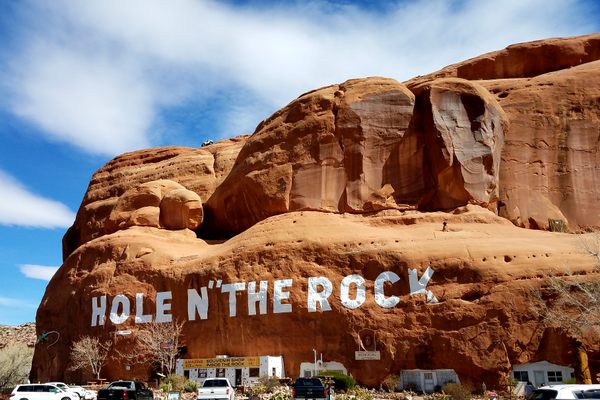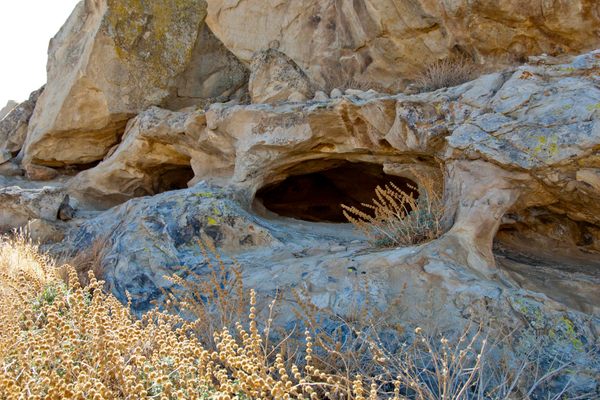Potash Road Rock Art Site
This site is home to ancient petroglyphs and pictographs dating back to 6,000 B.C.
Driving in the desert just outside of Moab, it is hard to believe that anyone could live there without modern amenities. However, along the side of Utah Scenic Byway 279 (also called Potash Road) is a fascinating petroglyph panel that proves people were doing just that. The desert varnish (or patina) on the rock made a natural tableau for various Native American groups to create these petroglyphs. The site was discovered when the highway was being built, and the ruins of an ancient building were found in the path. The holes for the roof poles can still be seen next to the panel.
The oldest petroglyphs date back to at least 3,000 years. Classified as Archaic, they depict strange anthropomorphs—humanoid figures with animal features. The Fremont culture (450-1300) contributed their own carvings to the site, among them depictions of bighorn sheep and hunting scenes. Finally, there are contributions from the Ute community, created post-contact with European settlers. This includes depictions of people riding horses and some hunting tactics. All included abstract symbols, the meanings of which have been largely lost to time.
Before the highway was built, there was a slope of talus that extended up to the petroglyph panel. This slope provided a platform for these ancient artists to work from. The removal of the talus put the petroglyph panel much higher off the ground than it initially was, inadvertently making it more difficult for vandals to reach.
Unfortunately, its proximity to the highway also makes it much easier for those vandals to find. Already the area has been defaced by those who think their initials are a valid contribution to works of art that were already complete centuries ago. It is important to remember that adding your own mark to petroglyph panels is not only illegal, but also destructive to the cultural heritage of the people who once lived here and their descendants.























Follow us on Twitter to get the latest on the world's hidden wonders.
Like us on Facebook to get the latest on the world's hidden wonders.
Follow us on Twitter Like us on Facebook